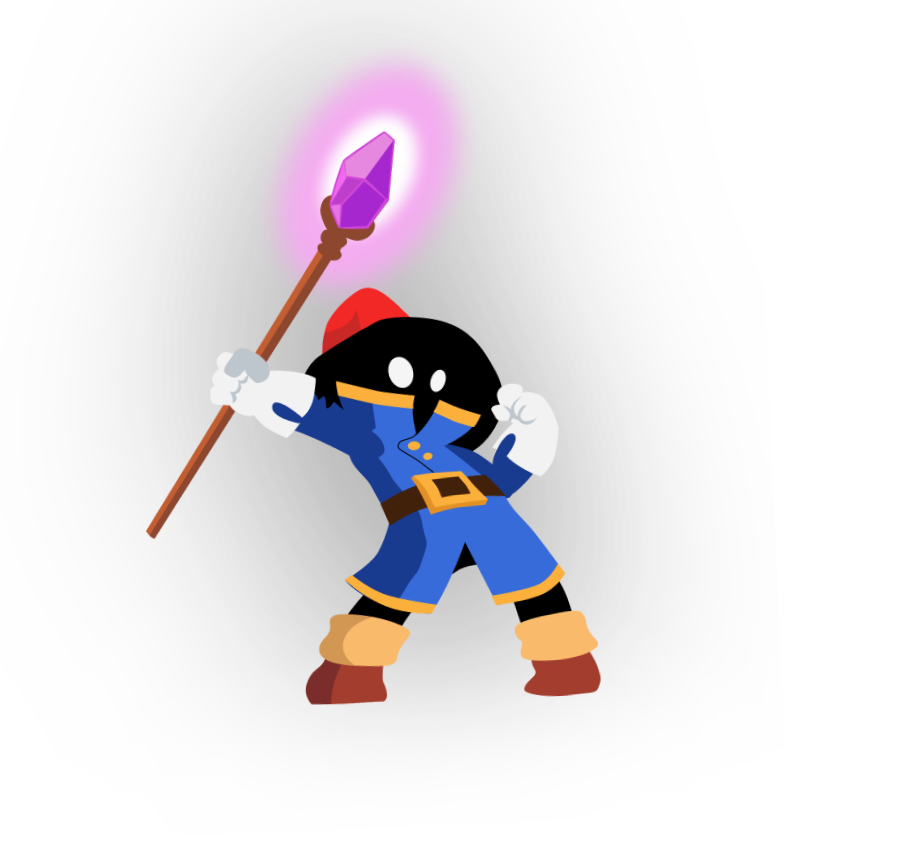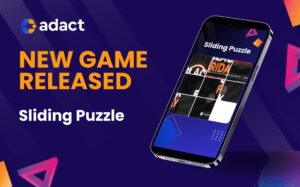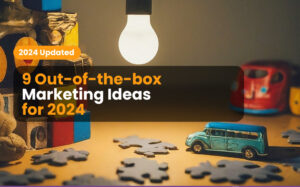Ever wonder just how well gamification works when it comes to engaging an audience and keeping them coming back for more? These awesome gamification examples will put all your doubts to rest about just how powerful gamifying campaigns can be.
Take a look and see how twelve companies have used the Adact gamification platform to get ahead of the game and magnify their reach beyond what they thought was ever possible.
What is gamification?
Gamification is the application of game elements, principles and mechanics in non-game contexts to engage, motivate and influence behavior. It involves incorporating game-like features – such as challenges, rewards, competition and progression – into various activities or systems to make them more engaging and enjoyable.
Many organizations use gamification in various ways, e.g., to improve employee engagement, marketing, branding, education, training of new employees or in health and wellness. The effectiveness of gamification relies on thoughtful design, clear goals and the ability to create meaningful and enjoyable experiences.
Successful gamification examples
Here are twelve of Adact‘s best gamification examples in action.
1. Atomic Wallet

Atomic Wallet is an online wallet that helps users store, manage and exchange 500 cryptocurrencies. They decided to make their own Jeopardy with Adact to create a successful marketing campaign.
The goal of this Jeopardy game was to reward users with tokens for their knowledge of Polygon crypto. Those tokens were then used to win prizes and other rewards. The game ended up being a great success for all game winners and the company itself!
Results:
- 246,000 unique players
- 95% game competition
- Nearly perfect user engagement
Check out our Jeopardy trivia questions collection for different categories.
2. A1 Slovenia
Telecommunications company A1 Slovenia created the Moj A1 app as a way for users to quickly commit to self-care and control of their accounts. The app allows customers to track data consumption, talk minutes and other expenses, as well as pay bills and activate new plans.
A1 Slovenia decided to learn how to make a trivia game and added three games to the app to increase the number of users and frequency of use. The idea was to make it a habit for people to visit the app regularly through a desire to engage in trivia and earn points. They ended up doing just that.
Results:
- Increased Monthly Active Users by 10% in 3 weeks
- A steady increase in active app users all year long
- 20,000 unique leads
- 3-question trivia led to a one-minute interaction with branded content
3. Euronics

Euronics aimed to generate buzz and awareness for their JBL Live Pro 2 headphones, so they landed on a branded game inspired by Candy Crush. The familiar game elements relied on a competitive spirit to drive users to the Euronics store and purchase their product.
The gaming campaign used familiar gamified elements like matching JBL headphones to generate more engaged users. The addictive nature of the contest kept users motivated and allowed them to accumulate loyalty points. A bonus was the ability to show the customer the differences in style and color between each pair of headphones.
Results:
- 6,100 unique page visitors
- Over 54,000 games started
- Over 3,300 unique leads
- 16.2 minutes average engagement time (one-minute average gameplay with a single player playing the same game approximately 16.2 times)
4. CreditStar
CreditStar had two goals in mind when building the campaign. The first was to have fun and the second was to remind people about their products and offers.
Holiday campaigns are all about fun. Doesn’t breaking as many pumpkins as possible in 60 seconds sound like fun to you? That’s why CreditStart used the Adact gamification software to make their Halloween smash game a smashing hit.
Results:
- 20% customer conversion rate (with a call-to-action button at the end of the game)
5. Adažu
When Adažu decided to make their swipe-style game with Adact, they had a few goals in mind. They wanted to present limited-edition products to customers and engage users in hopes to make their chip brand the most popular on the market. The company also desired to use simple games as a means of nostalgia and positive association with its brand.
Adažu used radio stations, online channels, digital screens and in-store displays to promote their game. People who heard about this fun game quickly voted for their favorite chip flavor while waiting for results.
Results:
- 3,836 people voted on the first day
- Nickname “chips Tinder” trending on social media
- Customer loyalty increased greatly
6. Eggo
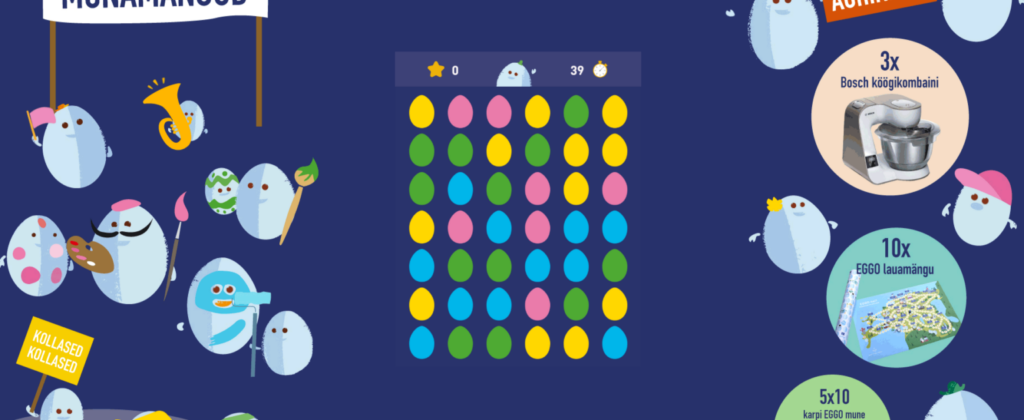
An Estonian egg production company, Eggo, employed gamification techniques in their branded Candy Crush game to maximize advertising.
The sales teams settled on a Match 3 game type and called it Eggo World to strengthen the customers’ connection between their product and brand. The game ended up being one of the most successful Easter marketing ideas to boost engagement among customers and other users.
Results:
- Engaged 5,000 people in 3 weeks
- 190,000 gameplays
- The most active player played 4,900 times
- The average player played 38 times
7. Kaubamaja
Kaubamaja is an Estonian department store that brought eCommerce gamification into the mix when it produced the Shopping Race game to promote its latest flash sale. The game mechanics in this drop game are a great example of how a simple and fun campaign can get people talking.
The main aim of the game was to have customers earn real-world rewards through a little healthy competition. This great gamification example proved highly addictive and action-based for longer engagement times.
Results:
- 10,000 players in one day
- 99% game completion
- 150-second engagement per player
8. Swedbank

This modern financial services platform sought a way to satisfy its customers and create a learning path for them to save for a better future. They wanted to strengthen customer loyalty programs through gamification elements and get people excited about winning prizes during the holidays.
Advent calendar games are a great way to implement gamification around the holidays. Swedbank used Adact software to create an advent calendar with prizes behind every door – and their campaign was a great success!
Results:
- 100 times more engagement
- 140,000 gameplays in 24 days
- 24,000 potential new customers
9. Tele 2
After checking in with Adact on how to make a Wheel of Fortune, telecommunications company Tele 2 decided to go for it and let players try their luck at a spin on their game wheel.
Tele 2 was looking to grow brand awareness and capture new leads through the fun and excitement of their Wheel of Fortune campaign. They ended up getting a lot of traffic and doing just that.
Results:
- 10,069 leads
- 18,683 gameplays in 2 weeks
10. Tallink Grupp
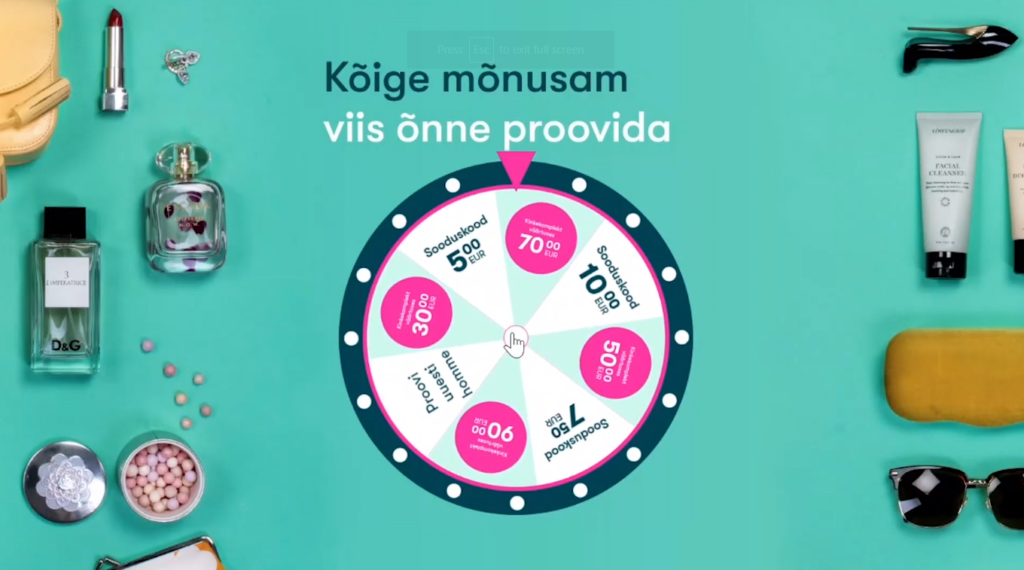
Gamification makes it easy to boost real-life sales and receive instant feedback. Tallink Grupp transport services know this and are no strangers to using gamification examples as a part of their campaigns. This time their goal was to target their online store’s younger audience.
Their Wheel of Fortune campaign appealed to a younger audience and proved an effective way to spread brand awareness among players. The point of the game was to give out coupon codes to customers in hopes they would use them. Each player could only spin the wheel once a day, which kept them coming back for more.
Results:
- 3,238 unique leads
- 5,315 gameplays
- 98.81% click-through rate
11. BITE
Bite is a Lithuanian telecom company that wanted an out-of-the-box way to collect customers’ emails in preparation for a big Black Friday promotion they were having. Gamification helps gather customer data and encourages users to complete tasks and engage with the company.
The Match 3 Black Friday campaign they designed had a minimalistic style that included both prizes and a leaderboard to register check-ins. The results, however, were anything but minimal.
Results:
- 567,077 visits
- 488,307 games started
- 98.9% completion rate
- 14% bounce rate
- An average of 51 gameplays per player
12. Orkla
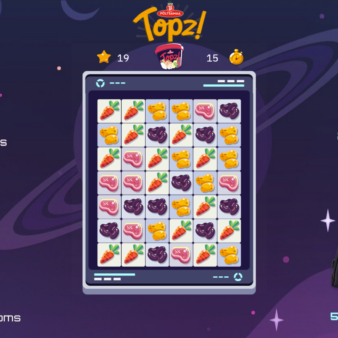
Orkla made gamification work for them in promoting their new food product Topz. The Match 3 game elements take advantage of customers’ short attention spans and need for instant gratification when being marketed a product.
They recruited social media masters to spread the word about their campaign on social channels like Facebook and Instagram. In the one month they ran their campaign, they noticed a massive increase in potential customers interacting with their brand.
Results:
- 931,342 overall reach
- 409,871 gameplays
- 16-minute average engagement
- 16% bounce rate
- 96% completion rate
Join the list of successful gamification examples with Adact
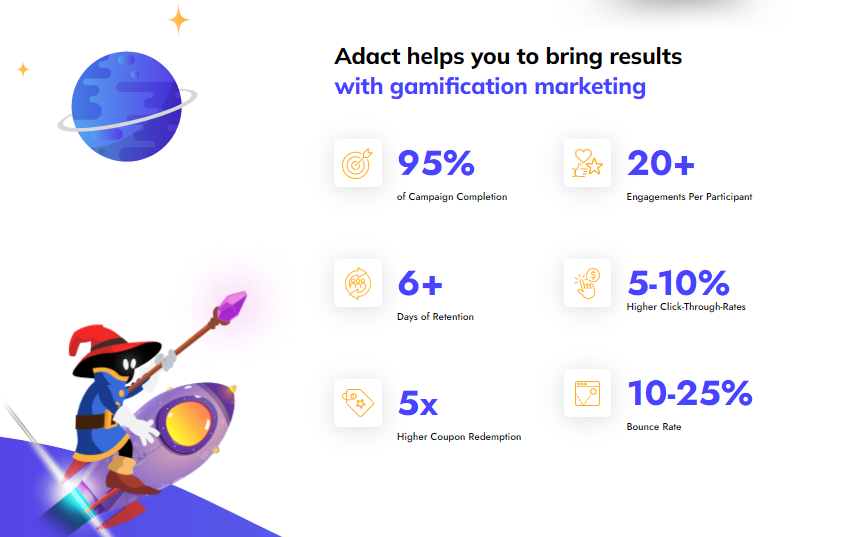
Now that you have seen the success, it’s time to join in on the fun. Adact gamification software is the best on the market for incorporating exciting and simple no-code game elements into your campaign.
Gamification with Adact is the perfect antidote for a short attention span. Creating a campaign can strengthen brand recognition, make learning fun and skyrocket your leads and customer satisfaction, but it can also help with team building and corporate training and encourage organizational productivity.
Get started with our software today to promote your brand and entertain your audience!
Conclusion
Gamifying your campaigns can improve customer, brand and even employee engagement, but that’s not all. Great examples of gamification not only improve engagement but also create competitions, award badges and provide new knowledge to their players.
Consider all these fantastic benefits that gamification software offers when planning your next marketing move.
Gamification examples: FAQs
One example of how to use gamification in education is the use of educational quizzes or trivia games. These games incorporate elements of competition, rewards and progress tracking to engage learners and reinforce their knowledge and understanding of a subject.
Companies can use gamification in the workplace for employee recognition and reward programs. These programs incorporate game elements to incentivize and motivate employees, fostering a positive work environment and encouraging desired behaviors and achievements. Gamification in HR is also becoming a popular way to promote training sessions and onboard job candidates.
Fun gamification ideas include contests, challenges, trivia, badges, leaderboards, a virtual reward system or even gamified storytelling. All these examples exist in gamification in sales, marketing, education, training plans and more.
Gamification can be a highly effective strategy when implemented thoughtfully and tailored to the specific context and audience. When using the right gamification software, gamification can increase engagement, motivate users, develop skills and enhance social interaction and collaboration.

